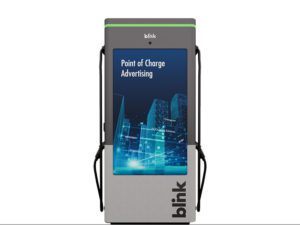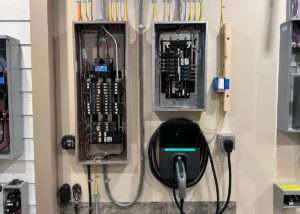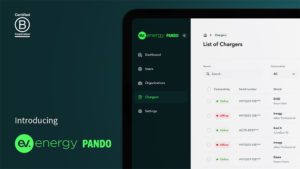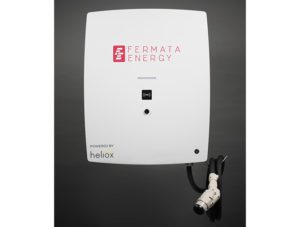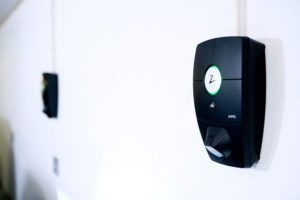EVSE manufacturer Blink Charging launched five new products at the recent Consumer Electronics Show in Las Vegas. The new chargers are designed to serve global markets including the US, Europe, Asia and Latin America. “With the launch of these new state-of-the-art products, Blink is expanding our offerings to meet the needs of customers across the… Read more »
Search Results Found For: "bidirectional charging"
ADS-TEC unveils its new ChargePost battery-based charging system
ADS-TEC Energy, a manufacturer of battery-buffered energy systems, has unveiled a new battery-based charging system. The new ChargePost is equipped with two DC fast charging points and two optional 75-inch monitors that can be used for advertising space. It’s aimed at gas stations, car dealerships, fleet operators, offices and commercial buildings. ChargePost enables up to… Read more »
Eaton showcases smart breaker EV charging technology
Power management company Eaton has expanded the residential demonstration area within its Experience Center in Pittsburgh. As vehicle electrification continues to have a cascading impact on energy infrastructure, Eaton installed its latest smart breakers and EV charging infrastructure to show visitors how these technologies can contribute to home energy management strategies for the benefit of… Read more »
The Mobility House to manage charging and V2G for 30 electric school buses in NYC
New York City School Bus Umbrella Services (NYCSBUS) has selected The Mobility House to manage charging and vehicle-to-grid (V2G) operations for a major school bus electrification project. NYCSBUS, which received an $8-million grant from NYSERDA for the program, will use The Mobility House’s energy management system, ChargePilot, to optimize infrastructure planning and operation for 30… Read more »
ev.energy’s new Pando is a cloud-based EV charging management platform
British EV software specialist ev.energy has launched a new cloud-based EV charging tool for business. Pando is designed to enable charger manufacturers, distributors and installers to be fully compliant with UK Smart Charging Regulations. It provides load management, compliance testing and charger sharing as standard features. Following months of testing with 20 partners and over 20,000… Read more »
AMP’s EV charging solutions use Wolfspeed’s E-Series silicon carbide MOSFETs
Battery management specialist AMP has integrated Wolfspeed’s E-Series silicon carbide MOSFETs into its Energy Management Unit. AMP’s market-ready energy management solution integrates DC charging, DC-DC conversion and bidirectional onboard AC charging into a single platform. Wolfspeed’s E-Series MOSFETs are optimized for use in automotive applications such as traction inverters, onboard chargers and high-voltage DC-DC converters…. Read more »
Advanced charging solutions for next-gen commercial EVs
Sponsored by Littelfuse Three scenarios with dedicated power electronic solutions As the electrification of heavy-duty or commercial vehicles gains more acceptance, charging larger batteries than the ones in electric passenger cars increases in importance. Because time is money, especially in logistics, the preferred options are increasing charging power or assigning idle times for charging. These… Read more »
Fermata’s newest V2X bidirectional charger, the FE-20
Fermata Energy, a specialist in vehicle-to-everything (V2X) charging systems, has successfully deployed its FE-15 bidirectional charger on multiple commercial projects. Now the company has added a second commercial V2X-capable bidirectional charger to its lineup, the FE-20. The FE-20 is a DC fast charger that can both charge and discharge the battery of a bidirectionally-enabled EV,… Read more »
Charging station manufacturer Zaptec implements Plug and Charge
European charging station manufacturer Zaptec has added Plug and Charge functionality to its Zaptec Pro Level 2 chargers. Plug and Charge allows EV drivers to simply plug in and walk away—the vehicle communicates with the charger, and automatically initiates the authentication and payment process. The Zaptec Pro has been hardware-ready for the past two years,… Read more »
Hillcrest Energy’s new bidirectional onboard EV charger
Hillcrest Energy Technologies has filed a patent application for “a simplified EV charging solution” that offers universal, backward-compatible, bidirectional (V2X) charging capabilities. The company’s goal is to name a launch partner and begin proof-of-concept validation in 2023. Hillcrest says an EV using its solution would no longer require an onboard charger, which would reduce the… Read more »




